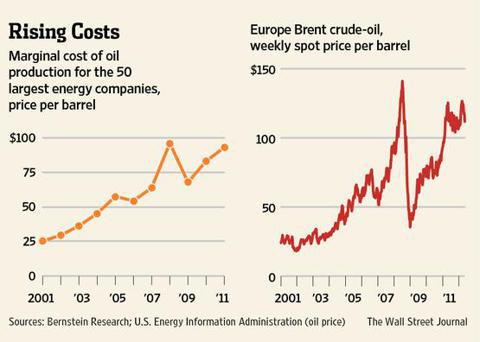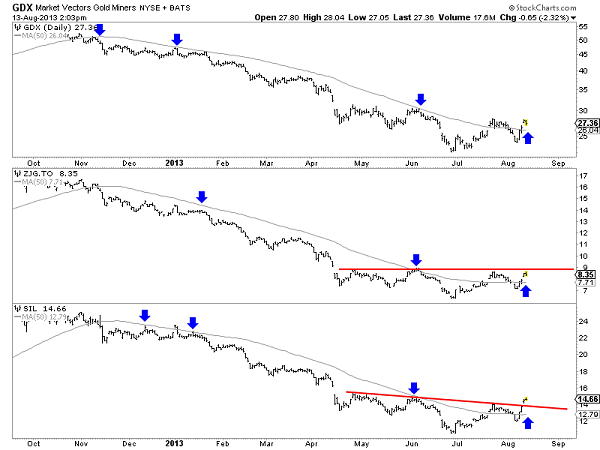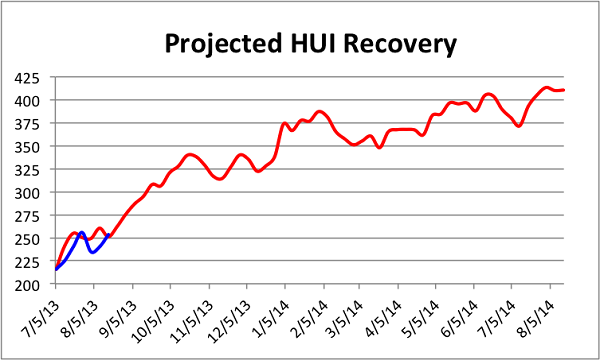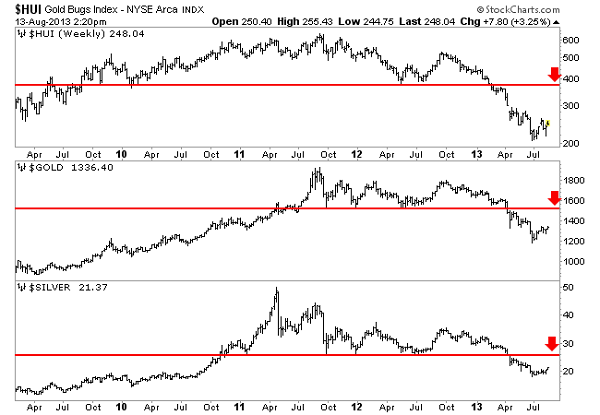Timing & trends
“Oil is absolutely certain to become incredibly short in supply and very high priced. The imported oil is not your enemy, it’s your friend. Every barrel that you use up that comes from somebody else is a barrel of your precious oil which you’re going to need to feed your people and maintain your civilization. And what responsible people do with a Confucian ethos is suffer now to benefit themselves and their families and their countrymen later. The way to do that is to go very slow in producing domestic oil and not mind at all if we pay prices that look ruinous for foreign oil.
It’s going to get way worse later …
The oil in the ground that you’re not producing is a national treasure … It’s not at all clear that there’s any substitute [for hydrocarbons]. When the hydrocarbons are gone, I don’t think the chemists are going to be able to just mix up a vat and create more hydrocarbons. It’s conceivable that they could, I suppose, but it’s not the way to bet. We should spend no attention to these silly economists and these silly politicians that tell us to become energy independent.
Let me pose a question for you. It’s 1930. Oil in the United States is in glut. We have cartels to get the price up to $0.50 a barrel. Everywhere we drill we find more oil in our own country; everywhere we drill in Arabia we find even more.
What would the correct policy of the United States have been in that time? Well, the correct policy would have been to issue $150 billion of very long-term bonds and cart 150 billion barrels of Middle Eastern oil into the United States and throw it into our salt caverns and leave it there untouched until the current age.
It’s easy to see that in retrospect, but who do you see who ever points this out? Zero. We have a brain-block on this issue. We should behave now to do on purpose what we did on accident then.” – Charlie Munger
According to Bernstein Research, that marginal cost of production influenced by tight, deepwater and oil sands production, is now in excess of $90 per barrel.


Nuclear power accounts for 5.7% of the world’s energy and 13% of the world’s electricity. Uranium, used in nuclear power, is a relatively clean source of energy that does not produce greenhouse emissions. Uranium is extremely dense – it is nearly as heavy as gold. It is, however, about 500 times more common than gold in the earth’s crust. This infographic covers the history of uranium, its properties, the supply and demand forecasts, the advantages and disadvantages of nuclear power, uranium as an energy source, and military applications.

Are You Prepared For a Market Meltdown?
The markets are skating on very thin ice.
Stocks have hit new all time highs, but the ugly realities beneath this move in the markets have got many of the world’s most elite investors scared stiff.
Consider the following.
- Warren Buffett, arguably the greatest investing legend of the last 100 years has dumped many of his consumer discretionary holdings and is sitting on the single largest cash hoard of his entre career (he definitely doesn’t think it’s time to buy).
- Stanley Druckenmiller, investing legend, and former partner of George Soros has closed his hedge fund stating “…I see a storm coming. Maybe bigger than the storm we had in 2008 to 2010…”
- Jim Rogers, famed investor who made so much money that he retired at the ripe age o has warned that 2013 will be a disaster “… if you are not worried about 2013, please, get worried”
These guys have collectively made billions from investing. And they’re all terrified by what’s happening in the economy and the markets today.
It’s not difficult to see why.
Japan’s bond market is on the verge of imploding. Remember the impact Greece had on the markets? Well Greece’s bond market was just $450 billion. Japan in contrast has a bond market is over $7 TRILLION in size.
Europe is facing the single longest recession in its history. Youth unemployment is over 50% in some EU nations and total unemployment is nearly 20%.
And then there’s the US where 76% of Americans are living paycheck to paycheck with little to no emergency savings. And nearly 30% had NO SAVINGS AT ALL.
More on Japan: The Smart Money Is Leaving the Building
Japan continues to dominate the economic news. The latest move concerns Prime Minister Abe’s new economic policies to cut corporate taxes. He also announced plans to run a shakeup at Japan’s political ministries.
This is “Plan B” for Abe who has found that his policy of “Abenomics” or pushing the Bank of Japan to print even moremoney has failed to stimulate Japan’s economy.
Abe won in a landslide last September on his platform of urging the Bank of Japan to do more. This platform ignored the failure of QE to stimulate growth in Japan in the previous 20 years (Japan had already engaged in QE programs equal to 25% of the country’s GDP). It also ignored the risks of unfettered money printing, namely higher inflation.
Sadly, Abe has discovered that ignoring both of these key issues, while good politically, has been disastrous economically. Abe won the election and the Bank of Japan announced a record $1.4 trillion QE effort in April 2013. To put this number into perspective, this would be the equivalent of Ben Bernanke announcing a $3.75 trillion QE plan in the US. Suffice to say it was a “shock and awe” move.
Unfortunately, it hasn’t worked. Japan’s industrial production fell3.3% month over month in June. At the same time, Japan’s consumer price index registered its first increase in 14 months in June. The pace of increase was the fastest since 2008 when commodity prices were at record highs.
In plain terms, the Japanese economy is failing to respond to Abenomics. This is the single most important issue for the global financial system today.
The economy and financial markets have been moving in a zig-zag pattern ever since 2008 with drops in asset prices and GDP being met by intervention and stimulus by the world’s Central Banks.
However, thus far no Central Bank has gone “all in” with QE. The larger efforts have been focused on specific timelines (six months to a year) and the ongoing efforts have been tied to economic developments (the Fed claims it will taper QE when US employment falls to an acceptable level).
Never before has a Central Bank stated point blank that it’s firing a bazooka at the economy. Japan has done this. It has failed. And this failure has effectively been the “Emperor has no clothes” moment for Central Bank interventions.
And the markets are taking note.
Traders and investors do not respond to sea changes instantly. The smart ones take note and begin adjusting their portfolios and hedging their bets. This doesn’t result in massive market moves as these investors are sophisticated enough to move out of old positions and into new ones without drawing too much attention
It’s only when the investment herd en masse realizes that something has changed that you begin to see market Crashes.
This process has begun in the world. The smart money is leaving the market. And the market rally is being driven by fewer and fewer companies. This is classic Bubble Topping signals.
This is not to say that the market will crash tomorrow. But the sea change has hit and it’s now a matter of time. The likelihood of a full-scale market Crash similar to 1987 occurring in the coming months has increased dramatically.
If you have not taken steps to prepare for a market collapse, we have a FREE Special Report that outlines how to prepare your portfolio. To pick up a copy, swing by:
http://gainspainscapital.com/protect-your-portfolio/
Best Regards
Graham Summers
Chief Market Strategist
Phoenix Capital Research





 (Just Kidding!)
(Just Kidding!)
What is interesting is that during Japan’s lost decade [from 1991-2001] it outperformed the Eurozone in all categories: growth was faster, debt growth was slower, manufacturing productivity was higher, and labor costs grew more slowly.
Obviously there are several takeaways here, and we haven’t even broached the disastrous social impact of towering unemployment rates [specific country brain drain, birth rates, fall in scientific research, family strife, suicides, etc.]:
- If growth doesn’t resume soon, debt/gdp ratios across the Eurozone will mirror Japan’s; but in many ways because of such poor relative productivity and size of the Eurozone banking system the rise in debt will likely be that much more dangerous.
- As a hub for future industry in a globalized world where multi-nationals have so many choices, it looks bleak for countries inside the euro straight jacket. In short, foreign direct investment will go elsewhere.
- Instead of bringing cultures together, the single currency is helping bring old animosities to the surface, which are numerous thanks to two recent civil wars (WWI and WWII).
It seems unless something very big happens fairly soon, politicos across the Eurozone will be responsible for marginalizing the future of their people simply because they have invested so much political capital in this bold, but seemingly failed, experiment called the single currency despite passing by all the signs that read, “Turn back now!”
So, what is the endgame here?
















